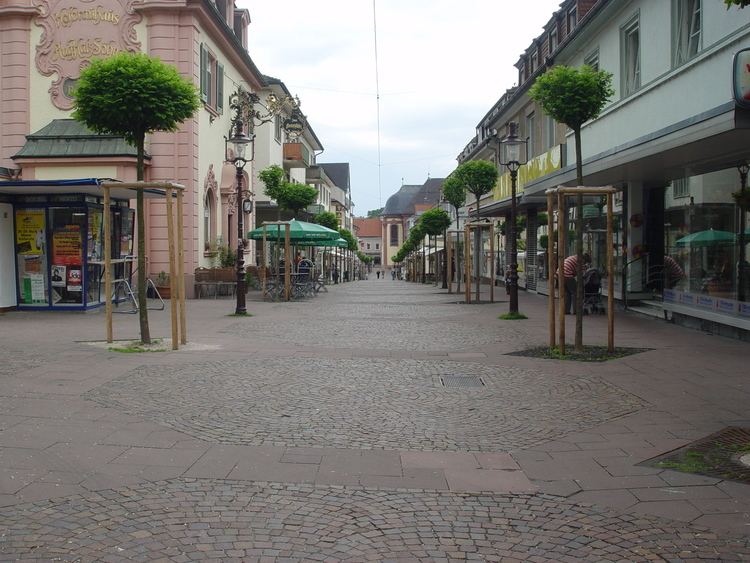Admin. region Karlsruhe Elevation 115 m (377 ft) Population 47,523 (31 Dec 2008) | District Rastatt Time zone CET/CEST (UTC+1/+2) Local time Saturday 1:52 AM | |
 | ||
Weather 7°C, Wind NE at 21 km/h, 83% Humidity Points of interest Schloss Rastatt, Schloss Favorite, Wehrgeschichtliches Museum Rastatt, Stadtmuseum Rastatt, Riedmuseum Pamina‑Rheinpark | ||
Schloss rastatt residential palace in baden w rttemberg germany
Rastatt ( [ˈʁaʃtat]) is a town and baroque residence in the District of Rastatt, Baden-Württemberg, Germany. It is located in the Upper Rhine Plain on the Murg river, 6 km (3.7 mi) above its junction with the Rhine and has a population of around 50,000 (2011). Rastatt was an important place of the War of the Spanish Succession (Treaty of Rastatt) and the Revolutions of 1848 in the German states.
Contents
- Schloss rastatt residential palace in baden w rttemberg germany
- Map of Rastatt Germany
- Rastatt the city with the most beautiful castles on the upper rhine
- History
- Local attractions
- International relations
- Sons and daughters of the town
- References
Map of Rastatt, Germany
Rastatt the city with the most beautiful castles on the upper rhine
History
Until the end of the 17th century, Rastatt held little influence, but after its destruction by the French in 1689, it was rebuilt on a larger scale by Louis William, margrave of Baden, the imperial general in the Habsburg-Ottoman War known popularly as Türkenlouis.
It then remained the residence of the margraves of Baden-Baden until 1771. It was the location of the First and Second Congress of Rastatt, the former giving rise to the Treaty of Rastatt. In the 1840s, Rastatt was surrounded by fortifications to form the fortress of Rastatt. For about 20 years previous to 1866, it was occupied by the troops of the German Confederation.
The Baden revolution of 1849 began with a mutiny of soldiers at Rastatt in May 1849 under Ludwik Mieroslawski and Gustav Struve, and ended there a few weeks later with the capture of the town by the Prussians. (See The Revolutions of 1848 in the German states and History of Baden.) For some years, Rastatt was one of the strongest fortresses of the German empire, but its fortifications were dismantled in 1890.
In 1997, a new Mercedes-Benz car factory started production in Rastatt.
Local attractions
Rastatt and the surrounding area is home to a variety of historical buildings, includes palaces and castles such as Schloss Rastatt and Schloss Favorite. In the vicinity of Rastatt is the Black Forest and the French border.
International relations
Rastatt is twinned with:
